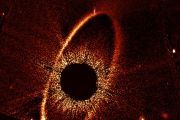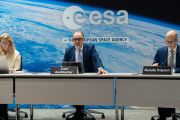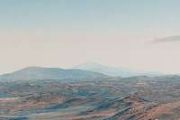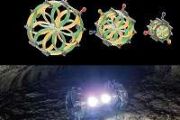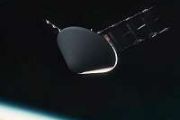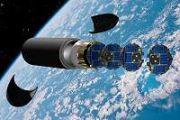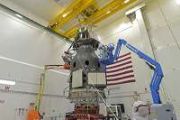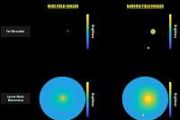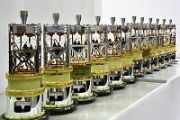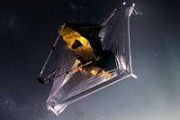
Copernical Team
334th ESA Council: Media information session
 Video:
01:15:00
Video:
01:15:00
Watch the replay of the media information session where ESA Director General Josef Aschbacher and ESA Council Chair Renato Krpoun (CH) brief journalists on the key decisions made during the ESA Council meeting held at ESA Headquarters in Paris on 11–12 June 2025.
Space boarding pass
 Image:
Space boarding pass
Image:
Space boarding pass Rice students develop an award-winning adaptive exercise harness for astronauts to use in space
 In the reduced-gravity space environment, human muscles and bones atrophy faster than they do on Earth. To slow down that process, astronauts need several hours of vigorous exercise each day they are on a space mission. This requirement for regular rigorous exercise is expected to become more stringent in future manned space missions, which are expected to last longer, involve more challenging c
In the reduced-gravity space environment, human muscles and bones atrophy faster than they do on Earth. To slow down that process, astronauts need several hours of vigorous exercise each day they are on a space mission. This requirement for regular rigorous exercise is expected to become more stringent in future manned space missions, which are expected to last longer, involve more challenging c Look Up secures major capital boost to expand radar network and space traffic services
 Three years after its founding, European space surveillance firm Look Up has secured EUR 50 million in funding to accelerate the global deployment of its radar network and strengthen its suite of space traffic management services. The financing combines equity, bank debt, and non-dilutive public funding, placing it among the top three largest Series A rounds in European space technology to date.
Three years after its founding, European space surveillance firm Look Up has secured EUR 50 million in funding to accelerate the global deployment of its radar network and strengthen its suite of space traffic management services. The financing combines equity, bank debt, and non-dilutive public funding, placing it among the top three largest Series A rounds in European space technology to date. Breakthrough hybrid model restores orbit accuracy for BeiDou-3 satellites
 Two BeiDou-3 navigation satellites once plagued by orbit inconsistencies are now operating with significantly improved accuracy, thanks to a novel hybrid modeling technique that better accounts for solar radiation pressure. Researchers integrated a physically based Adjustable Box-Wing (ABW) model with the empirical ECOM2 framework, cutting laser ranging residuals by over 60% and improving real-t
Two BeiDou-3 navigation satellites once plagued by orbit inconsistencies are now operating with significantly improved accuracy, thanks to a novel hybrid modeling technique that better accounts for solar radiation pressure. Researchers integrated a physically based Adjustable Box-Wing (ABW) model with the empirical ECOM2 framework, cutting laser ranging residuals by over 60% and improving real-t Next generation satellite servicing spacecraft completed by Northrop Grumman
 Northrop Grumman has successfully integrated a robotics payload onto its Mission Robotic Vehicle (MRV), advancing its satellite servicing platform under the Defense Advanced Research Projects Agency's (DARPA) Robotic Servicing of Geosynchronous Satellites (RSGS) program.
The MRV, developed by Northrop Grumman subsidiary SpaceLogistics LLC, incorporates the U.S. Naval Research Laboratory's
Northrop Grumman has successfully integrated a robotics payload onto its Mission Robotic Vehicle (MRV), advancing its satellite servicing platform under the Defense Advanced Research Projects Agency's (DARPA) Robotic Servicing of Geosynchronous Satellites (RSGS) program.
The MRV, developed by Northrop Grumman subsidiary SpaceLogistics LLC, incorporates the U.S. Naval Research Laboratory's UAH researcher unveils new map of Milky Way galaxy in atomic hydrogen
 Dr. Sukanya Chakrabarti, the Pei-Ling Chan Endowed Chair at The University of Alabama in Huntsville (UAH), a part of The University of Alabama System, has co-authored a paper that uses young stars to develop a more accurate map of the outer gas disk of the Milky Way galaxy.
The findings are being presented at the 246th meeting of the American Astronomical Society in Anchorage, Alaska, on J
Dr. Sukanya Chakrabarti, the Pei-Ling Chan Endowed Chair at The University of Alabama in Huntsville (UAH), a part of The University of Alabama System, has co-authored a paper that uses young stars to develop a more accurate map of the outer gas disk of the Milky Way galaxy.
The findings are being presented at the 246th meeting of the American Astronomical Society in Anchorage, Alaska, on J Solar Orbiter delivers first clear look at the Sun's poles from deep space
 Thanks to a newly inclined orbit, ESA's Solar Orbiter spacecraft has captured the first-ever images of the Sun's poles taken from outside the ecliptic plane. This novel vantage point marks a breakthrough in solar research, offering new insights into the Sun's magnetic field, solar cycles, and space weather dynamics.
Historically, solar imaging has been confined to the ecliptic plane-where
Thanks to a newly inclined orbit, ESA's Solar Orbiter spacecraft has captured the first-ever images of the Sun's poles taken from outside the ecliptic plane. This novel vantage point marks a breakthrough in solar research, offering new insights into the Sun's magnetic field, solar cycles, and space weather dynamics.
Historically, solar imaging has been confined to the ecliptic plane-where Earth-based telescopes offer a fresh look at cosmic dawn
 For the first time, scientists have used Earth-based telescopes to look back over 13 billion years to see how the first stars in the universe affect light emitted from the Big Bang.
Using telescopes high in the Andes mountains of northern Chile, astrophysicists have measured this polarized microwave light to create a clearer picture of one of the least understood epochs in the history of t
For the first time, scientists have used Earth-based telescopes to look back over 13 billion years to see how the first stars in the universe affect light emitted from the Big Bang.
Using telescopes high in the Andes mountains of northern Chile, astrophysicists have measured this polarized microwave light to create a clearer picture of one of the least understood epochs in the history of t Decades-old mystery of AlCl dipole moment resolved
 In a study that closes a long-standing knowledge gap in fundamental science, researchers Boerge Hemmerling and Stephen Kane at the University of California, Riverside, have successfully measured the electric dipole moment of aluminum monochloride (AlCl), a simple yet scientifically crucial diatomic molecule. Their results, published in Physical Review A, have implications for quantum technologie
In a study that closes a long-standing knowledge gap in fundamental science, researchers Boerge Hemmerling and Stephen Kane at the University of California, Riverside, have successfully measured the electric dipole moment of aluminum monochloride (AlCl), a simple yet scientifically crucial diatomic molecule. Their results, published in Physical Review A, have implications for quantum technologie 

